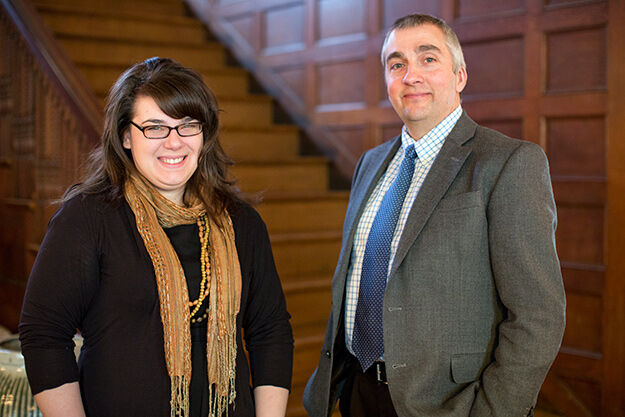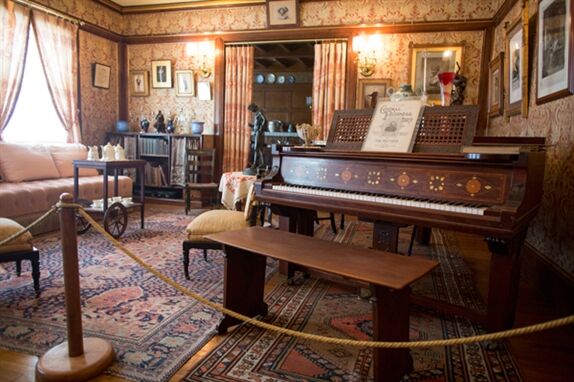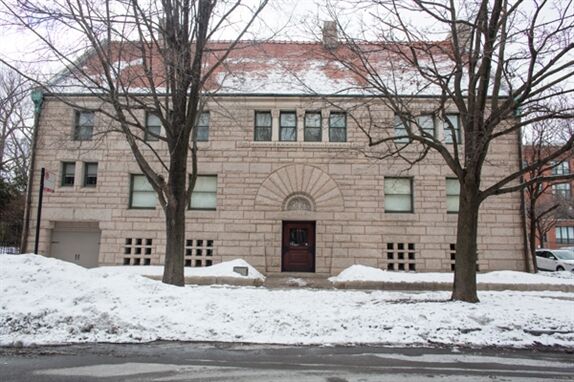
Passion for Preservation: Alumni preserving Chicago's historic Glessner House

The path to preservation is not always paved. Bill Tyre (MS 1999), Executive Director and Curator at historic Glessner House in Chicago, realized his passion for historic sites while working in the accounting field. Embarking on a new path after learning about SAIC's Master of Science in Historic Preservation program in the mid-1990s, the Chicago native was drawn by the school's ties to the city and its status within the preservation community. "The school's reputation and its connection with the Art Institute as an institution was very appealing," Tyre explains. "I decided that if I went back to school for preservation, I wanted to stay in Chicago because I knew this is where I would always live."
Tyre entered SAIC with a strong interest in historic site management, and identifies his hands-on experience during the program as the building blocks for his present work at Glessner House. An independent study at the school's Roger Brown Study Collection "was probably my best experience in the whole two years," Tyre says. "I was actually working with the artifacts. I really loved that because it was the real thing, it wasn't hypothetical." Tyre assumed a full-time position at Glessner House in 2007 after interning at the site and incorporating research on the house into his master's thesis. "Glessner House had always been in the forefront of what I wanted to do. I would say, well, that would be my dream job."
The museum houses a rich collection of objects produced during the Arts and Crafts movement, and the construction of the house is deeply rooted within Chicago's history. Built during the city's Gilded Age, both the building's architect, Henry Hobson Richardson, and the Glessner family themselves were considered progressives of the day. Frances Glessner was a noted silversmith and beekeeper, and both Glessners were patrons of the Art Institute of Chicago and helped found the Chicago Symphony Orchestra.

The house was originally gifted to the American Institute of Architects in 1924, but the economic pressures of the Great Depression forced the organization to return the home to the family. Glessner House passed through a series of institutional owners until the mid-1960s, when the building was threatened with demolition. In response, a small group of local architects formed the Chicago School of Architecture Foundation in 1966, and the home was ultimately saved.
Glessner House's vibrant history was one of the factors that first attracted Historic Preservation alum and current Assistant Curator Becky LaBarre (MS 2008) to the home. Seeking to transfer her undergraduate experience in interior design to the preservation of historic buildings, LaBarre's path to SAIC was direct. "I applied to three different schools while I was interning for an architect during my senior year of college," LaBarre says. "I had the choice of schools in Michigan, Indiana, or Chicago, and I was advised by the architect that if I could get into the school in Chicago, I should do it because it would change my life."
Tyre and LaBarre credit the Historic Preservation program's connections within the Chicago community as an important part of their paths to Glessner House. "By the time I graduated, I had so many connections within the preservation community through the instructors and guest speakers. I felt like I knew everybody who was anybody in preservation by the time I was done," says Tyre.
"The network of professionals that I met has really come in handy," LaBarre adds. After undergoing docent training at Glessner House and assisting with the museum's textile collection as a student, LaBarre took on the position of assistant curator in 2010.
Richardson’s last remaining work still standing in Chicago, the house is reputed for its unique architectural status, collection of artifacts, and dynamic social history. "The history of Glessner in the preservation movement is really powerful to me," LaBarre says. "The fact that the Chicago Architecture Foundation was formed to save this house shows that the deep history of the preservation movement in the city is all centered around this building." Major restorations to the Glessner House in recent years have included the recreation of the parlor through the utilization of a variety of modern techniques, such as the replication of William Morris drapes via digital scanning and printing methods.
For Tyre, these restoration projects make up his favorite part of the job. "It really incorporates those research skills that I love. That's where the Historic Preservation program came in handy, because so much of that was learned during the coursework." From their foundations in the Historic Preservation program, Tyre and LaBarre both continue to work to ensure that Glessner House remains a thriving Chicago treasure for years to come.

